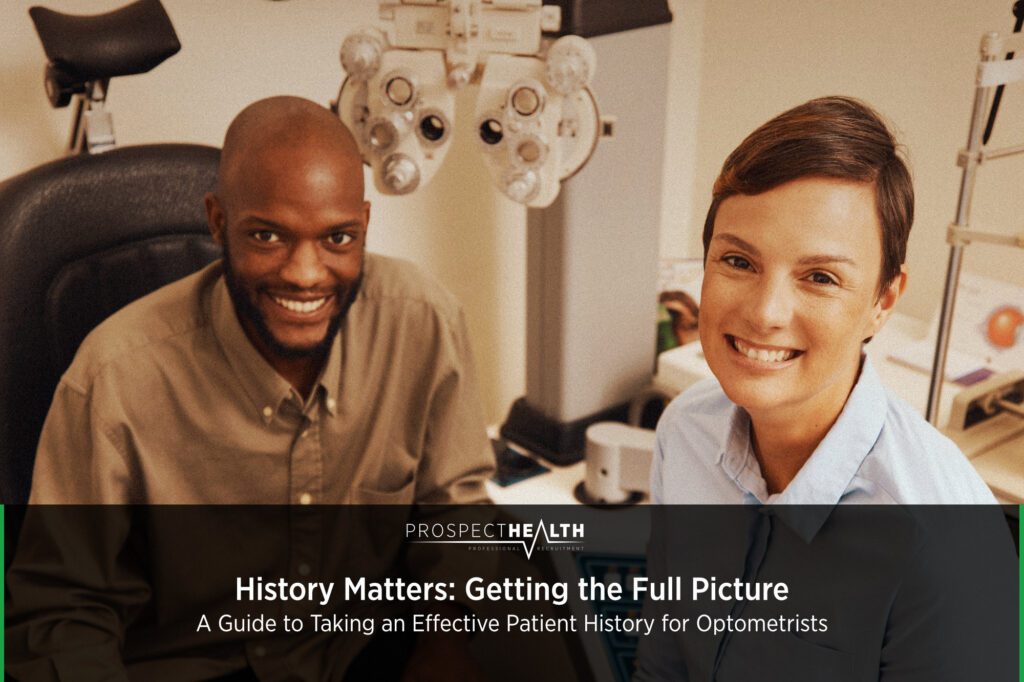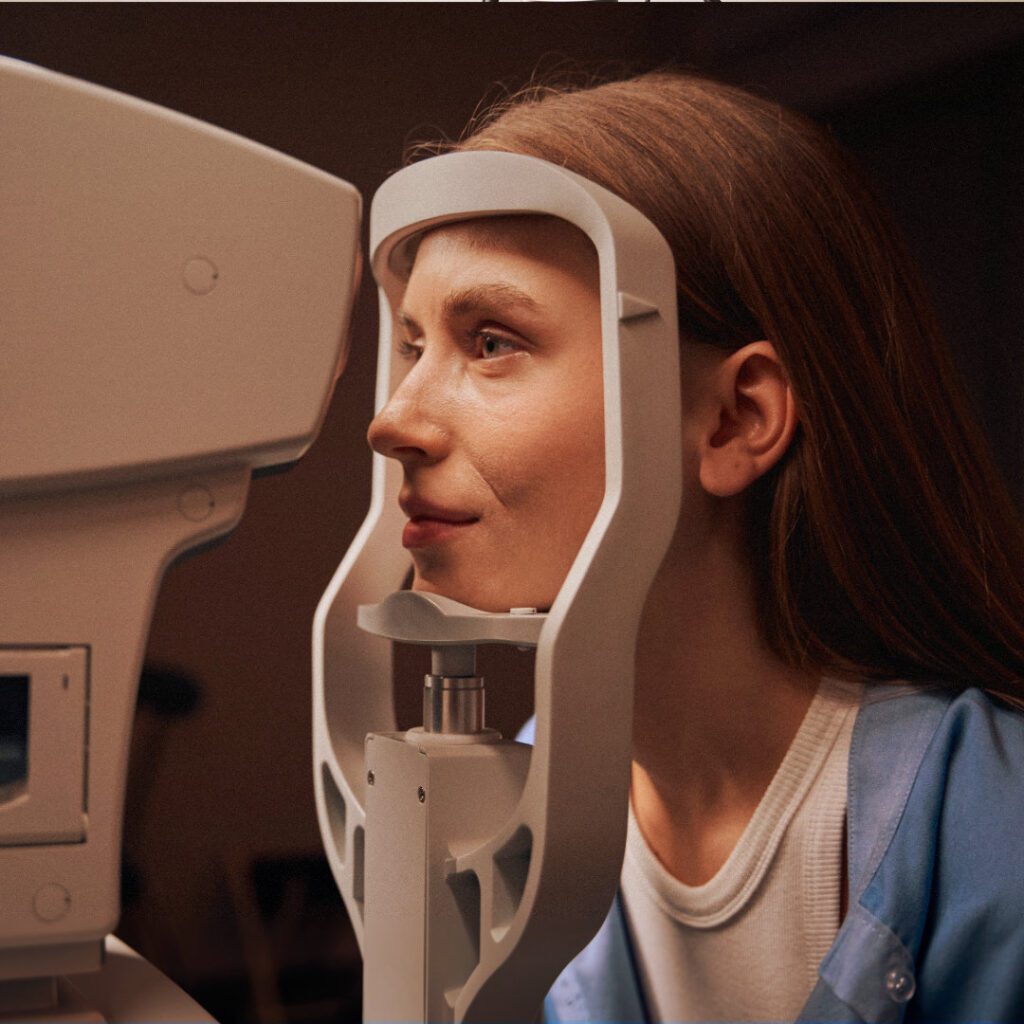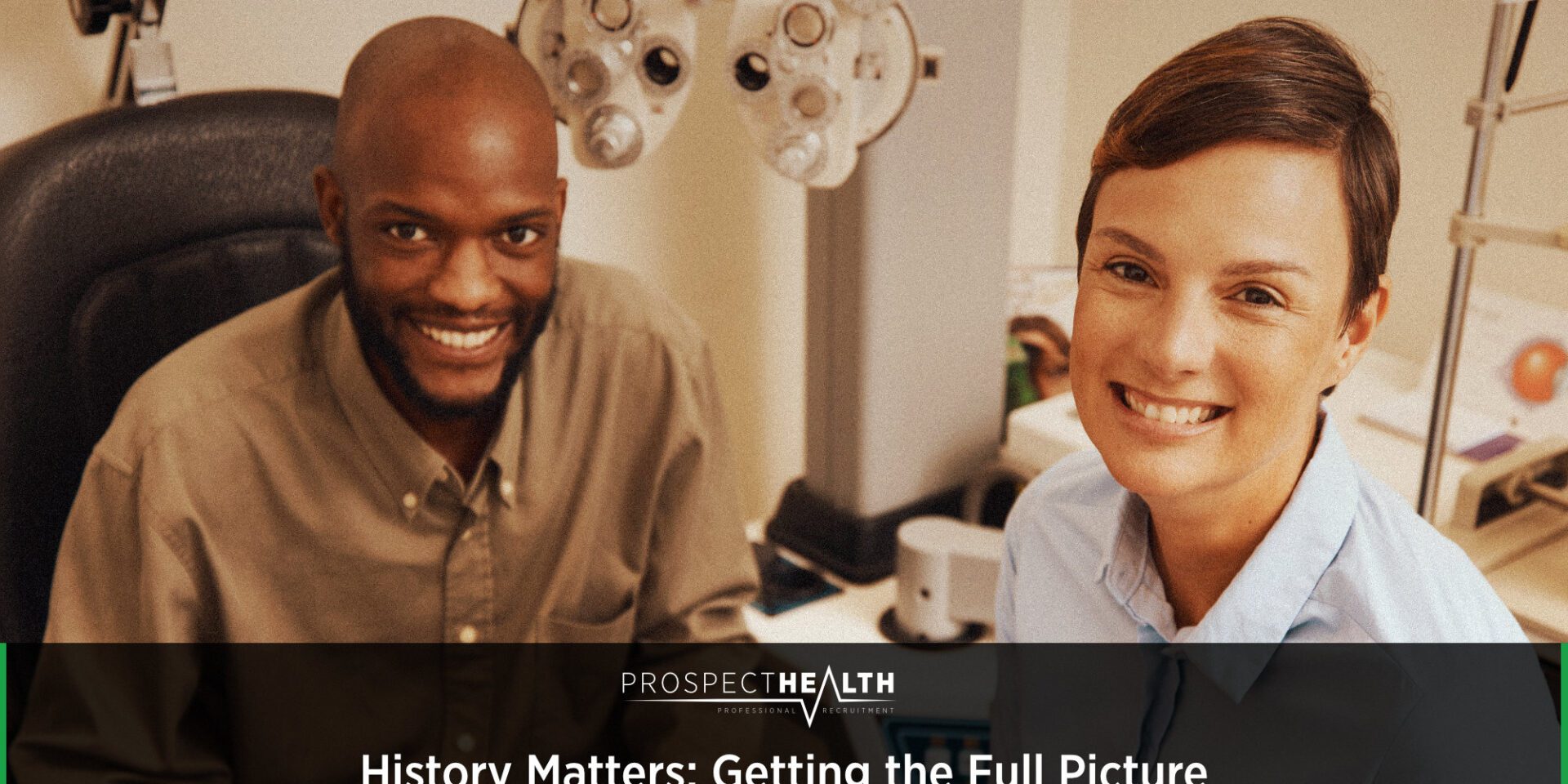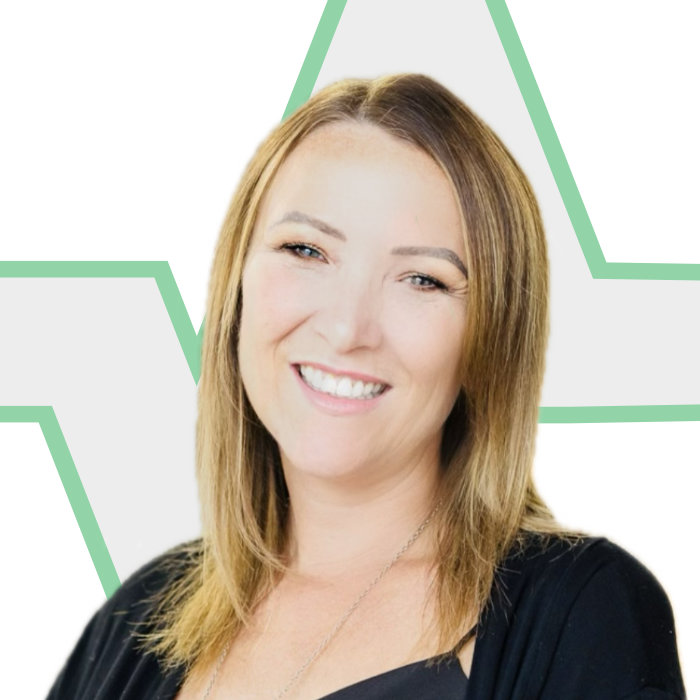
History Matters Webinar: Getting the Full Picture
A Guide to Taking an Effective Patient History for Optometrists
Part of our Webinar Series of Guides for Optical Students and Pre-Registration Optometrists
Understanding a patient’s story is one of the most crucial skills in optometry. Before you ever reach for a diagnostic tool, your patient’s history can tell you more than you might imagine. Each symptom has a backstory, and your goal as a clinician is to master that story.
In our webinar, History Matters: Getting the Full Picture, Indy walked you through how to take an effective patient history using a structured approach, what to observe before the patient even speaks, and how to translate symptoms into meaningful diagnostic clues.
To access all our pre-recorded webinars via our online learning management system, please complete the form below:

Access our pre-recorded Optometry Webinars
Below is a summary of the main learning points from the webinar:
The Power of Observation – Patient History-Taking for Optometrists
Your history-taking starts the moment your patient walks in, not when you start asking questions. Before speaking, observe how your patient moves, sits, and interacts.
- Mobility and posture: A patient with an ocular motility anomaly, such as an esotropia or exotropia, may tilt their head to minimise diplopia and maintain comfortable binocular single vision.
- Facial symmetry: Asymmetry can hint at congenital or neurological issues.
- Eye and lid features: During slit-lamp observation, look for lesions, ptosis, epiphora (watering), entropion, or ectropion.
- Ocular appearance: Redness, nystagmus, or eye turns can indicate underlying pathology.
- General demeanour: Consider how they communicate — do they understand your questions easily? Any speech or cognitive difficulties could influence how you conduct and adapt your examination.
Before you’ve even picked up a pen, these cues start painting the clinical picture.
Using the LOFTSEA Framework for History-Taking in Optometry
A structured approach ensures you don’t miss key details. One widely used framework is LOFTSEA, which stands for:
- Location and laterality
- Onset
- Frequency and duration
- Type
- Severity
- Effect on daily life and the patient
- A Associated symptoms
Start your history with an open-ended question, such as:
“What brings you in to see us today?”
or
“Have you noticed any problems with your vision?”
This encourages patients to describe their experience in their own words, which you can then explore systematically using LOFTSEY.
Exploring the Chief Complaint
Once you know the main reason for the visit, you can begin to narrow down your tentative diagnoses.
1. Location and Laterality
If the symptom is a headache, ask “Where exactly does it hurt?”
If the complaint is blurred vision, determine if it affects one or both eyes, and whether it’s at distance, near, or intermediate (e.g. computer work).
2. Onset
Did the symptom appear suddenly or gradually?
- Sudden onset may suggest acute pathology.
- Gradual onset could point toward refractive changes or mild, progressive conditions.
3. Frequency and Duration
Ask how often symptoms occur, how long they last, and if they worsen during particular tasks — such as reading, driving, or computer work.
4. Type and Severity
Encourage the patient to describe the symptom’s character:
- Headaches: throbbing, sharp, or dull?
- Blurred vision: constant or intermittent?
- Diplopia: vertical, horizontal, or torsional?
You can also ask them to rate severity on a scale of 1 to 10.
5. Effect on Daily Life
Determine how much the symptom interferes with their normal activities — driving, work, study, or hobbies.
6. Self-Treatment and Efficacy
Some patients self-manage with painkillers, rest, or reduced screen time. Understanding what helps (or doesn’t) adds context to their condition.
Probing Common Symptoms when History-Taking as an Optometrist
Distance and Near Vision
Always ask about both. Tailor your questions to the patient’s age and lifestyle:
- For younger patients: “Can you see the board at school clearly?”
- For older adults: “Do you have trouble reading the newspaper or your phone?”
Avoid generic questions like “How’s your near vision?” — instead, relate them to daily tasks.
Eye Strain (Asthenopia)
Eye strain often results from:
- Uncorrected refractive error
- Accommodative dysfunction (e.g. hyperopia, presbyopia)
- Binocular anomalies
- Poor lighting or ergonomics
- Occasionally, ocular pathology such as inflammation or retinal disease
Listening closely to the context will help differentiate the cause.
Headaches
Determine whether headaches are ocular or systemic:
- Ocular headaches are often linked to near work and visual effort.
- Systemic or neurological causes may be suggested if pain is occipital or temporal.
Ask about location, frequency, and triggers to guide your differential.
Pain or Burning
Often related to dry eye syndrome, which may stem from:
- Tear film quality or quantity issues
- Medication side effects
- Systemic diseases (e.g. arthritis, Sjögren’s syndrome)
Diplopia
Ask:
“Do you see two of everything?”
“Does it go away when you cover one eye?”
If double vision persists with one eye covered, it’s monocular diplopia, which could point to a cataract or irregular astigmatism. If it disappears, it’s binocular, indicating an ocular motility or neurological issue.
Flashes and Floaters
Floaters are common with vitreous changes, but flashes (photopsia) require more attention, as they can signal posterior vitreous detachment or retinal tears — particularly in high myopes. Always consider a dilated fundus examination in these cases.
Ocular, Medical, and Family History
A comprehensive history goes beyond symptoms.
Ocular History
Ask about:
- Spectacle or contact lens wear (type, purpose, duration)
- Previous eye surgeries, infections, or injuries
- Patching or amblyopia treatment during childhood
- Date of last eye exam
Medical History
Explain the relevance clearly:
“Some general health conditions can affect your eyes, so I’d like to know a bit about your health.”
Ask about:
- Hypertension, diabetes, arthritis, and thyroid conditions
- Duration, treatment, and control (e.g. HbA1c for diabetics)
- Any medication or allergies
Family History
Eye conditions often have hereditary components. Ask about:
- Strabismus, glaucoma, or macular degeneration
- Systemic diseases like diabetes or hypertension
For example, if both parents have had strabismus, the risk in children rises to 30–40%. Similarly, a family history of glaucoma or diabetes significantly increases a patient’s risk.
Lifestyle, Occupation, and Hobbies
Finally, ask about what the patient uses their eyes for daily:
- Occupation: Do they work with screens, machinery, or in bright outdoor settings?
- Hobbies: Any sports that might need protective or corrective eyewear?
- Driving: Are they driving regularly or for work?
These details not only help you tailor your advice, they also open opportunities for personalised optical recommendations, such as task-specific lenses or contact lenses.
The Art of a Logical, Efficient History-Taking for Optometrists
A well-taken history flows naturally, avoids repetition, and balances open-ended exploration with structured questioning. Always record positive and negative responses (e.g. “No flashes, no floaters, no headaches”) for both clinical clarity and medico-legal protection.
If no clear cause is found, reassure the patient and explain what has been ruled out. For systemic or uncertain findings, coordinate with their GP or specialist for further investigation.
Remember, every examination begins and ends with the story your patient tells you. Learn to listen closely, observe carefully, and connect the details. That’s where clinical excellence begins.
Are you preparing for your OSCEs and looking for career guidance too?
Prospect Health works with over 100 employers eager to hire newly qualified optometrists.
Alongside revision support, we can help you secure the right role for you when you qualify.
You can call us at 01423 813 452 or email us at [email protected]
Or view the rest of our Optometry jobs here!

Next up: A Guide to Anterior Eye Pathology: Essential Pre-reg skills
Recently, Aneesa led a detailed session on anterior ophthalmology, walking through common eye conditions, their presentation, and management.
The webinar covered cataracts, meibomian gland dysfunction, blepharitis, and various causes of red eye.

Talk to a specialist:
VICTORIA ASHTON
Specialist Recruitment Consultant
I am an experienced recruitment professional with a diverse background spanning GP recruitment, the Commercial sector, Practice Management, and most recently, Optometry.
After completing my degree as a mature student, I embarked on my recruitment career and have since found the industry both challenging and rewarding…


